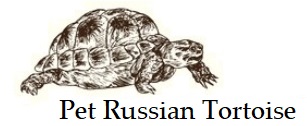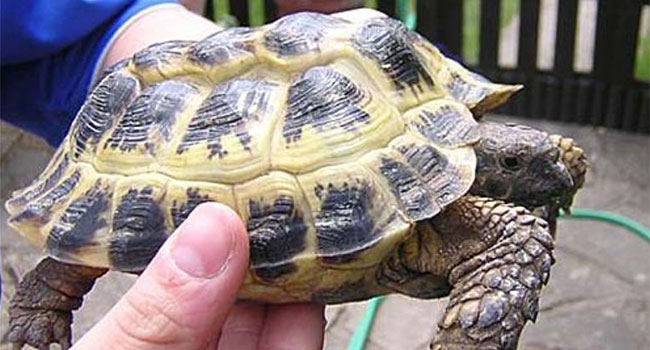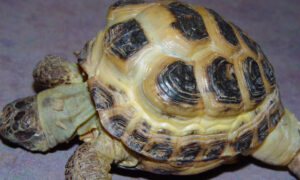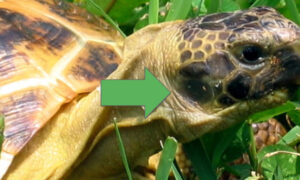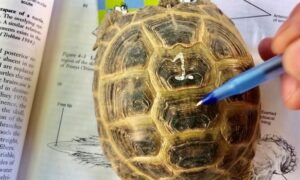Pyramiding is a form of metabolic bone disease where the keratin in the scutes grow upwards instead of outwards. Pyramiding in Russian tortoises is not as common as with other tortoise species, like leopard tortoises and sulcata tortoises. However pyramiding can occur in Russian tortoises.
What Causes Pyramiding in Tortoises?
There are many different thoughts as to what causes pyramiding in tortoises.
- Too much protein in the diet
- Not enough calcium
- Too much phosphorus, or a bad calcium to phosphorus ratio
- Not enough D3
- Lack of grains and fibers in the diet
- Overfeeding
- Overly dry environment
- Dehdration
- Lack of exercise (generally caused by a too small enclosure)
Originally, it was thought that pyramiding was caused by too much protein and not enough calcium in the diet. A lack of vitamin D3 is another common cause for pyramiding in tortoises, as D3 helps the body synthesize calcium and phosphorus in the body.
Another school of thought is that pyramiding is caused by a dry environment. Higher humidity isn’t as important for adult Russian tortoises, however baby Russian tortoises require slightly more humidity. When raising a baby Russian tortoise, set up a closed chamber enclosure to maintain humidity around 50% – 70%.
Prevent Pyramiding in Russian Tortoises
Pyramiding can be completely prevented.
Properly supplement with calcium. Regardless of whether you are housing your tortoise in and inside or outside enclosure, you want to add calcium supplements to your tortoise’s diet. For Russian tortoises housed outside, use a calcium supplement without D3. For a Russian tortoise housed inside, use a calcium supplement with D3.
When raising a baby Russian tortoise, set up a closed chamber enclosure or one that can maintain a humidity level. Proper humidity is thought to reduce the risks of pyramiding and to ensure a long, healthy life.
It’s also important to ensure that the enclosure is large enough for the tortoise to walk around and explore. It’s very important to ensure that the tortoise has enough room to exercise.
A proper enclosure should be:
- 10 times as long as the Russian tortoise’s length
- 5 times as wide as the Russian tortoise’s width
- 3 times as high as the Russian tortoise’s height
Treat and Reverse Pyramiding
The only way to treat pyramiding in tortoises is to correct diet and housing. Ensure proper supplementation and diet, as well as proper housing.
Unfortunately, you cannot reverse pyramiding. You can only slow or stop further pyramiding from occurring.
